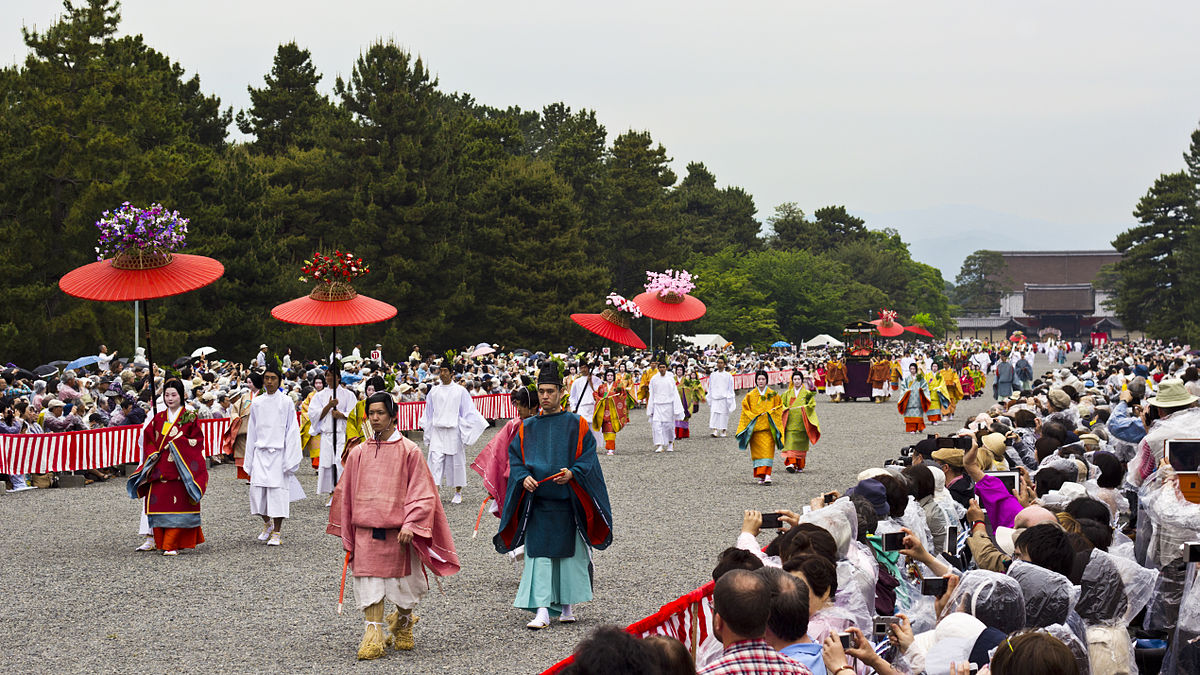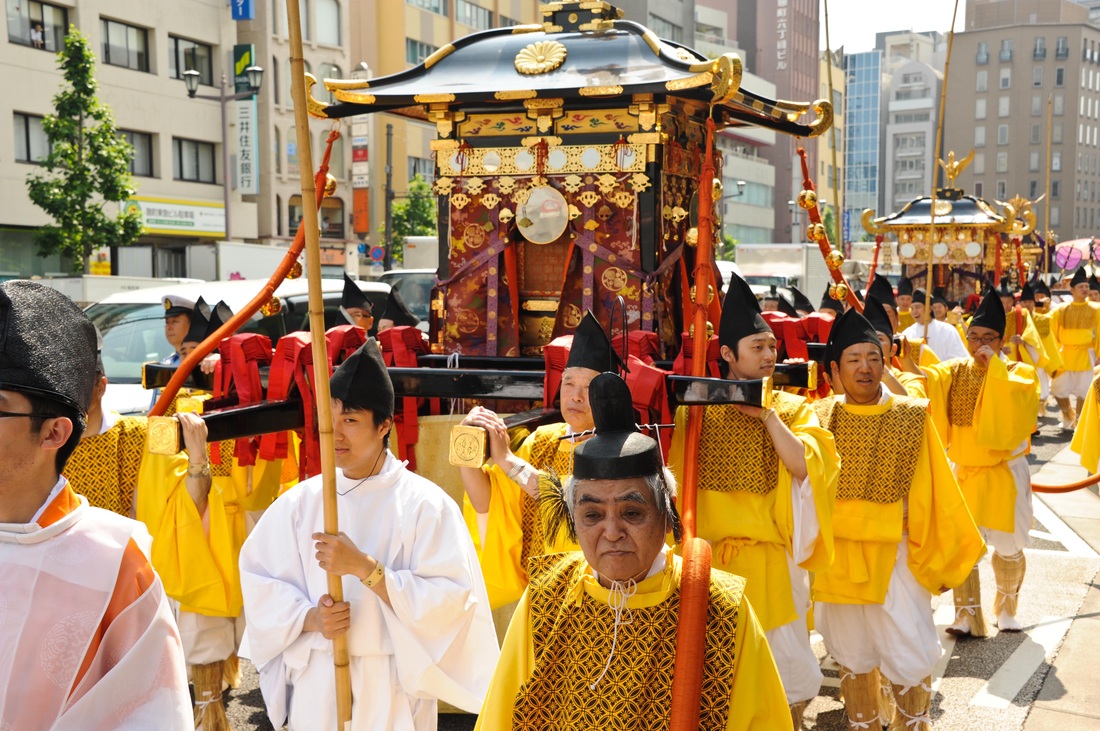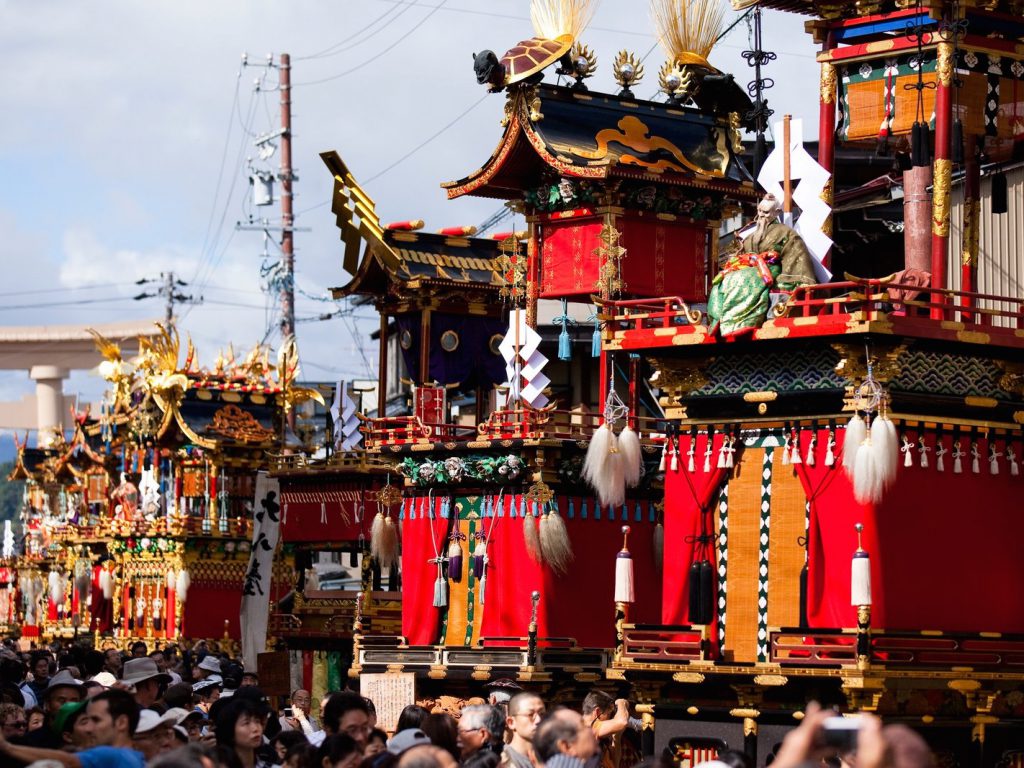- Kyoto’s maikos and geikos (geishas) perform their arts in dance, music and tea rituals for the crowds during the Miyako Odori festival.
- In May, one of the most outstanding night shows begins in the Nagaragawa River with trout fishing using cormorant seabirds.
- Rice planting is the big event at the Otaue Festival in June, with the ancient procedures for sowing recreated, along with music and dances.
With the arrival of spring, Japan hosts a number of festivals reliving the ancient war practices of the samurai, with the traditional floats and costumes of the Heian and Edo period, and the arts of the maiko and geishas in music, dance, and the tea ceremony to learn more about the popular customs of times gone by like trout fishing and planting rice. Here’s a selection of the most interesting events in the coming months:
April
Miyako Odori (April 1-24) Dance, songs, and theatre are performed by the maikos and geikos of the city at the Cherry Blossom Festival in Kyoto. Miyako Odori takes place in a theatre in the city and gives a unique insight into the world of cemeonies related to tea riuals, dance, traditional music and the especially fascinating presence of the geishas.
Hana Matsuri (April 8) Also know as the Floral Festival or Kanbutsue, where the locals celebrate the birth of Buddha. On this day, April 8th, small altars are decorated with flowers and a baby Buddha figurine.
Takayama Matsuri (April 14-15) Considered one of the most beautiful in Japan with more than 1000 people involved in a spectacular parade, and once evening falls the floats are each lit up with more than 100 paper lanterns (tourou). The city of Takayama in the prefecture of Gifu goes back to the 15th century to show visitors and locals the splendor of the ancient yatai floats and their handmade puppets, costumes of the time and the most traditional music and dances.

Kamakura Festival (April 14 & 21) The festival takes place at the Tsurugaoka Hachimangu shrine which serves as a symbol of the samurai society of the medieval period, the Kamakura,. The main attractions are the shizuka no mai ritual dances, which reproduce the scene of the master dancer Princess Shizuka. She was a well-known tragic heroine who was the focus of the battle between two generals from the Minamoto clan who fought for her love. Another highlight is the Yabusame, which shows the ancient samurai skills and horseback archery skills.
May
Aoi Matsuri (May 15) Also known as the “Hollyhock Festival” in Kyoto. The festival is a magnificent historical reconstruction of the Heian period, with some 500 people wearing ancient costumes parading through the city streets to recreate the processions of officials delivering the Emperor’s message and offerings to the shrines of Shimogamo and Kamigamo. The highlight of the procession represents the Imperial Princess who is chosen from among the city’s unmarried women and must be dressed in a formal style wearing 12 layers of kimono weighing 30kg in total.

Sanja Matsuri of Tokyo (May 18-20) One of the greatest mikoshi (portable shrines) festivals that takes place every year in Tokyo’s Asakusa district, thousands of visitors flood the streets to see the several dozen shrines paraded through the streets with dancers, musicians and people dressed as traditional craftsmen.
Japan also celebrates a number of holidays in May, commonly known as the Golden Week, with different national festivals like Constitution Day (May 3), Greenery Day (May 4), a day to celebrate nature and scenery and Children’s Day (May 5). All the country is kitted out with tent-shaped flags called koinobori to commemorate the festival.
Hakata Dontaku (May 3-4) is also held during the Golden Week in Fukuoka and features the locals parading through the street dressed up as gods, along withthe Hana Jidosha floats with gorgeously decorated vehicles with figures, lights, and colours.
June
Takigi Noh (June 1-2) Heian Jingu Shrine was built in 794 and mirrors the style and features of the Imperial Palace, and also houses the ancient Noh musical theatre. This type of performance is led by artists wearing wooden and lacquer masks and eye-catching costumes and is mixed with another performance element called the Kyogen, a comedic drama with more animated gestures and movements than the Noh.
Otaue Festival (June 14) The festival recreates the ancient procedures of planting rice at the Sumiyoshi Taisha Shrine. The main attractions are the song and dance performances, and it’s believed that dancing enhances the vitality of the grains.
Sanno Matsuri (June 7-17) More than 300 people dressed up in costumes from the Edo period take part in the procession that leaves from Hie-jinja Shrine and parades around the streets of Tokyo during the festival. Many people dress up in costumes as the Tengu goblin, characterised by its red face and long nose, and believed to possess supernatural powers.






